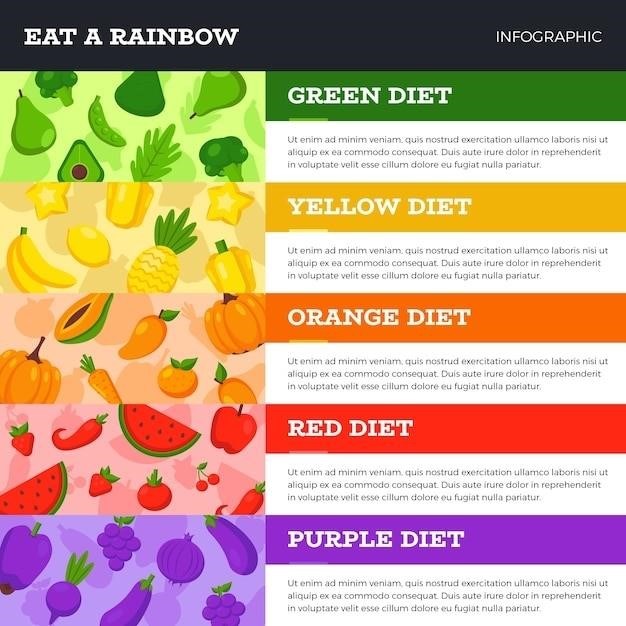Her Soul to Take⁚ A Deep Dive
Her Soul to Take, a paranormal dark academia romance by Harley Laroux, is available in PDF format. The book follows a demon and a ghost hunter in a story filled with intense romance, dark elements, and thrilling twists. You can find the PDF online through various sources including Z-Library and BookBub.
The Story⁚ A Paranormal Dark Academia Romance
Her Soul to Take plunges readers into a world where the line between the living and the dead blurs, where demons walk among humans, and where love and loss intertwine with ancient magic. The story centers around Raelynn, a spirited ghost hunter who finds herself in the clutches of a dangerous cult seeking to sacrifice her for their ritual. However, fate intervenes in the form of Leon, a powerful demon with a mysterious past and an equally mysterious connection to Raelynn.
As Raelynn fights for her survival, she finds herself drawn to Leon, a forbidden love blossoming amidst the shadows. Their connection is both alluring and dangerous, as Leon’s desire for her soul clashes with his growing affection for her; The story unfolds against the backdrop of a dark academia setting, with the characters navigating the ancient halls of a prestigious university where secrets and forbidden knowledge are readily found.
Her Soul to Take is a thrilling blend of romance, horror, and suspense, offering a captivating journey into a world where the supernatural and the human collide.
The Souls Trilogy⁚ Interconnected Worlds
Her Soul to Take is the captivating first installment of the Souls Trilogy, a series that delves into the complexities of love, loss, and the supernatural. While each book within the trilogy follows a different couple, they are interconnected by a shared timeline and a fictional world called Abelaum. This shared universe allows readers to explore different facets of the supernatural realm, encountering unique characters and intricate plotlines within each book.
The trilogy explores a diverse range of supernatural beings, from demons and witches to ghosts and other mystical creatures. This interconnected world fosters a sense of continuity, drawing readers deeper into the rich tapestry of the Souls Trilogy. The series’ focus on individual couples within a shared world offers a unique perspective on love and relationships, exploring themes of attraction, desire, and the search for connection in a world shrouded in mystery and danger;
Each book in the Souls Trilogy promises an immersive experience, drawing readers into a world where the ordinary and the extraordinary collide.
The Characters⁚ Leon, the Demon, and Raelynn, the Ghost Hunter
At the heart of Her Soul to Take lies a captivating clash of personalities⁚ Leon, the enigmatic demon, and Raelynn, the fearless ghost hunter. Leon, a being of immense power and captivating darkness, is a demon summoned from hell. He is a complex character, both alluring and dangerous, with a past shrouded in mystery. He craves Raelynn’s soul, a desire that fuels the central conflict of the story. Raelynn, on the other hand, is a determined and independent woman, skilled in the art of ghost hunting and unafraid to confront the unknown.
Their relationship is a complex dance of attraction and animosity. Leon’s raw power and enigmatic nature draw Raelynn in, while his dangerous intentions keep her on edge. Raelynn’s courage and defiance challenge Leon, forcing him to confront his own desires and motivations. Their interactions are filled with tension, banter, and a simmering attraction that ignites a passionate and forbidden romance. The story explores the dynamics of power and control, as Leon and Raelynn navigate their tumultuous feelings against the backdrop of a supernatural world.
Their unique personalities and the complexities of their relationship form the core of Her Soul to Take, creating a captivating story that blurs the lines between love and danger.
The Plot⁚ A Battle for Raelynn’s Soul
The plot of Her Soul to Take revolves around a thrilling battle for Raelynn’s soul, a conflict that unfolds against the backdrop of a sinister cult and a dangerous world of magic. Raelynn, a skilled ghost hunter, finds herself targeted by a cult seeking to sacrifice her to their dark deity. This perilous situation throws her into the path of Leon, a powerful demon with a connection to the cult. He is tasked with taking her soul, but his attraction to Raelynn complicates his mission.
As the cult closes in on Raelynn, Leon becomes her unlikely protector, torn between his duty and his growing feelings for her; The story unfolds as they face off against the cult’s deadly rituals and navigate the dangerous world of magic. Their relationship becomes intertwined with their fight for survival, creating a thrilling narrative that blends elements of romance, horror, and the supernatural. Their journey tests their limits, forcing them to confront their fears and make difficult choices in a world where the lines between good and evil are blurred.
The battle for Raelynn’s soul is not just a physical struggle, but a battle of wills, as she fights to retain her freedom and Leon grapples with his own conflicted desires. Their clash creates a captivating narrative that keeps readers on the edge of their seats.

The Themes⁚ Love, Loss, and the Power of Choice
Her Soul to Take delves into profound themes of love, loss, and the enduring power of choice, exploring these concepts through the complex relationship between Raelynn and Leon. The story grapples with the profound impact of loss, as Raelynn navigates the aftermath of a traumatic experience that has left her vulnerable and questioning her own strength. She finds herself drawn to Leon, a demon whose presence initially feels like a threat, but who ultimately becomes a source of comfort and understanding.
Their connection challenges the boundaries of love, forcing them to confront the complexities of attraction and the possibility of finding solace in the most unexpected places. As they navigate their tumultuous relationship, they grapple with the consequences of their choices, exploring the weight of decisions that can shape destinies. The story highlights the power of agency, even in the face of seemingly insurmountable odds, as Raelynn fights to reclaim her autonomy and Leon wrestles with his own internal conflicts, ultimately choosing his own path.
Through their journey, the novel explores the profound impact of choices on both individual lives and the world around them. It emphasizes the enduring power of love to heal wounds and the resilience of the human spirit, even in the face of profound loss and challenge.
Content Warnings⁚ A Look at Sensitive Material

Her Soul to Take explores mature themes and contains content that may be sensitive to some readers. The novel delves into the complexities of a dark romance, featuring explicit sexual content, including scenes of kink/fetish, breath play, bloodplay, and BDSM elements. It also addresses the darker aspects of human nature, exploring themes of violence, gore, and horror, which may be disturbing for some readers. The story includes depictions of drug use and references to a cult that engages in human sacrifice, adding to the overall intensity of the narrative.
Additionally, the book tackles themes of trauma and vulnerability, as the protagonist, Raelynn, grapples with the aftermath of a traumatic experience. Her journey involves confronting past pain and navigating the complexities of healing. The novel also explores themes of power dynamics and control, as Raelynn finds herself entangled with a powerful demon, Leon, who is both a source of danger and a potential savior. It’s crucial for readers to be aware of these sensitive topics and make an informed decision about whether the content is appropriate for them.
Readers should exercise caution and consider their personal sensitivities before engaging with the book.
The Reception⁚ Reader Reactions and Reviews
Her Soul to Take has garnered a significant following, with readers expressing a wide range of reactions and opinions. The book has received generally positive reviews, with many praising its unique blend of paranormal romance, dark academia elements, and spicy scenes. Readers have been captivated by the intense chemistry between the demon, Leon, and the ghost hunter, Raelynn, finding their relationship both thrilling and emotionally complex. The story’s dark themes and explicit content have also resonated with fans who enjoy edgy and unconventional romances.
Reviewers have commended the author’s ability to create a captivating and immersive world, drawing readers into the fictional town of Abelaum and its mysterious atmosphere. The book’s pacing has been praised for its ability to keep readers engaged, with a balance between steamy scenes and plot development. However, some readers have expressed concerns about the graphic nature of certain scenes, finding them to be excessive or disturbing.
Despite these varying perspectives, Her Soul to Take has undoubtedly made a mark on the paranormal romance genre, capturing the attention of readers seeking a captivating and thought-provoking reading experience.
Where to Find Her Soul to Take⁚ Online Resources and Availability
For those eager to delve into the world of Her Soul to Take, the PDF format offers a convenient and accessible option. Multiple online platforms cater to this demand, providing readers with various avenues to access the book. Z-Library, a prominent source for digital books, features Her Soul to Take in its extensive collection. Readers can navigate the site’s user-friendly interface to locate and download the PDF, enjoying the convenience of reading on their preferred devices.
BookBub, a renowned platform for book recommendations and deals, also showcases Her Soul to Take. Readers can explore the site’s curated selection of books, discovering information about the story and accessing links to potential download options. Additionally, various online communities and forums dedicated to paranormal romance often discuss Her Soul to Take, providing readers with insights and recommendations regarding its availability in PDF format.
By leveraging these online resources, readers can easily locate and obtain Her Soul to Take in PDF format, immersing themselves in the captivating world of demons, ghost hunters, and forbidden romance.
A Must-Read for Fans of Dark Romance
Her Soul to Take is a captivating paranormal dark academia romance that will leave readers enthralled. With its blend of forbidden love, supernatural elements, and a touch of danger, the story delivers a thrilling and immersive experience. The passionate romance between the demon Leon and the ghost hunter Raelynn is a highlight, offering a unique and intriguing dynamic. The inclusion of a sinister cult adds an element of suspense, keeping readers on the edge of their seats.
Her Soul to Take is an engaging read for fans of dark romance, offering a blend of steamy romance, thrilling suspense, and captivating world-building. The story’s exploration of themes such as love, loss, and the power of choice adds depth and complexity to the narrative. Whether you’re drawn to forbidden love stories or enjoy tales of the supernatural, Her Soul to Take is a must-read that will leave you wanting more.



























